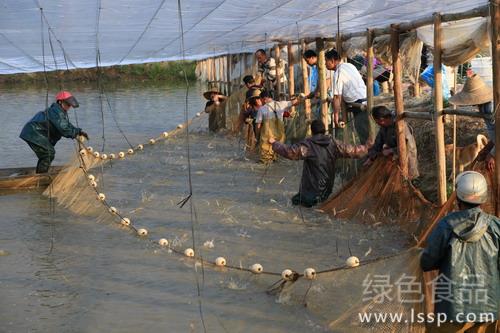What is the relationship between the culture of the four major domestic fish and meteorological conditions
Fish live in water, but it is also closely related to meteorological conditions.
Temperature fish is a variable temperature animal, the water temperature is the body temperature, the water temperature directly affects the metabolic activities of life, the optimum temperature ranges from 10 to 33 degrees Celsius, the optimum temperature is 25 to 30 degrees Celsius, the optimum temperature begins to dormancy below 10 degrees Celsius, and begins to feed at 10 to 15 degrees Celsius. Slow growth, increased appetite at 15 to 20 degrees Celsius, grows faster, grows fastest at 20 to 30 degrees Celsius, and slows down above 30 degrees Celsius. Therefore, the amount of bait should pay attention to the change of temperature, which is also related to the amount of dissolved oxygen in water.
Temperature is closely related to spawning, spawning, egg hatching, fry growth, transportation and so on. Water temperature 18 to 30 degrees Celsius, continuous sunny days to induce spawning, egg production, fertilization rate, hatching rate are high, domestic fish below 8 degrees Celsius stop eating, poor appetite above 30 degrees Celsius, low hatching rate below 16 degrees Celsius, high mortality rate above 31 degrees Celsius, less movement and less oxygen consumption of fish from 8 to 10 degrees Celsius, suitable for transportation. When the temperature changes suddenly, the fish is easy to die, especially when the fry is released, we should pay attention to the difference in water temperature.
Light fish, like other animals, need an adequate supply of oxygen. An important source of oxygen in the water is the oxygen released by photosynthesis of phytoplankton in the water. Other organisms and bacteria in the water also consume oxygen when they break down organic matter. Therefore, severe shading, or long-term overcast and rain, poor light will affect the content of oxygen in the water and affect the growth of fish. Without light, the production of plants in the water is affected, and the food supply of fish is also a problem.
The oxygen in the air can also be directly dissolved into the water, but the amount is small. When there are winds and waves, the oxygen dissolved in the water is more than 100 times faster than that in still water. When the temperature is high, the amount of dissolved oxygen decreases, and the decomposition is strong, which increases the consumption of oxygen, so it is more likely to lack oxygen at high temperature, resulting in floating head. When the air pressure is low, the oxygen dissolved into the water is also reduced, and the cloudy days with low pressure and high temperature are most prone to hypoxia, which is worth noting.
- Prev

Artificial Culture method of River Shrimp Water quality cultivation is the key
Artificial Culture method of River Shrimp Water quality cultivation is the key
- Next

Braised fish block
Raw materials: fish 1LB, ginger slices 3, chopped onion seasoning: salt, light soy sauce, soy sauce, cooking wine, starch fish, cut into pieces, mix in salt, cooking wine, light soy sauce marinate for 15 minutes. Heat the pan, pour in the cooking oil and add to 60-70% heat. Each piece of fish is evenly dipped with starch (not too much) and fried in oil until both sides are slightly yellow. Pour out the excess oil and leave only a small amount. Add a small bowl of water, a tablespoon of sugar, always smoke a tablespoon, boil together, taste whether or not to add some salt. Collect juice over high fire and sprinkle with chopped onions.
Related
- On the eggshell is a badge full of pride. British Poultry Egg Market and Consumer observation
- British study: 72% of Britons are willing to buy native eggs raised by insects
- Guidelines for friendly egg production revised the increase of space in chicken sheds can not be forced to change feathers and lay eggs.
- Risk of delay in customs clearance Australia suspends lobster exports to China
- Pig semen-the Vector of virus Transmission (4)
- Pig semen-the Vector of virus Transmission (3)
- Five common causes of difficult control of classical swine fever in clinic and their countermeasures
- Foot-and-mouth disease is the most effective way to prevent it!
- PED is the number one killer of piglets and has to be guarded against in autumn and winter.
- What is "yellow fat pig"? Have you ever heard the pig collector talk about "yellow fat pig"?

